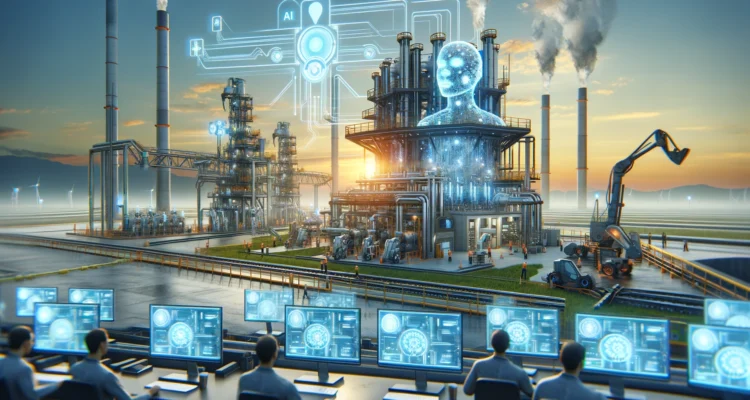Title: AI Revolution in Energy: Driving Down Costs and Transforming Extraction
Introduction: In the ever-evolving energy landscape, Artificial Intelligence (AI) stands as a transformative force, reshaping not only how we consume and distribute energy but also how we extract it. In this article, we will explore the dual role of AI in both driving down the costs of energy production and revolutionizing the extraction of fossil fuels, such as oil, natural gas, and coal. These advancements hold the promise of making energy more efficient, affordable, and sustainable.
- Smart Grids and Renewable Energy Integration: AI’s impact on energy distribution is profound. Smart grids, powered by AI algorithms, optimize energy delivery, reduce transmission losses, and ensure energy is distributed precisely where it’s needed. This minimizes waste and inefficiencies, ultimately lowering energy costs.
Additionally, AI plays a crucial role in integrating renewable energy sources into the grid. By predicting renewable energy generation and optimizing energy storage systems, AI enables a smoother transition to clean energy while reducing the need for backup fossil fuel power plants.
- Energy Efficiency and Sustainability: AI’s reach extends into enhancing energy efficiency across sectors. In buildings and industries, smart sensors and AI-driven systems optimize energy usage by adjusting heating, cooling, and lighting in real time. This reduces consumption and operational costs.
In transportation, AI-driven electric and autonomous vehicles not only lower energy demand but also contribute to sustainability. These advancements are pivotal in achieving energy efficiency and reducing environmental impact.
- Energy Trading and Market Optimization: AI is transforming energy markets by streamlining energy trading and pricing. Energy trading platforms, equipped with AI algorithms, match supply and demand in real time, reducing costs and maximizing the use of renewable energy sources. AI also assists in market analysis, helping energy companies make informed decisions and save costs.
- Fossil Fuel Extraction and Automation: AI and automation are revolutionizing fossil fuel extraction processes. In the oil and gas industry, machine learning algorithms pinpoint optimal drilling locations, reducing exploratory drilling costs and minimizing environmental risks. Autonomous drilling rigs monitor and adjust drilling operations in real time, enhancing efficiency and safety.
In coal mining, AI-powered robots and autonomous vehicles reduce the need for labor in hazardous conditions, resulting in cost savings and improved safety.
- Predictive Maintenance and Resource Management: AI-driven predictive maintenance ensures the reliability of critical infrastructure in the energy sector. This proactive approach reduces downtime, prevents accidents, and lowers operational costs in oil and gas facilities.
Resource management and production processes are optimized through AI, which continuously analyzes data to identify efficiency improvements. This results in reduced waste, lower energy consumption, and cost reductions across the board.
Conclusion: The convergence of AI and energy is propelling us towards a future where energy is not only abundant and sustainable but also remarkably affordable. Whether through smart grids, renewable energy integration, energy efficiency enhancements, or market optimization, AI is driving down the costs of energy production and distribution.
Simultaneously, AI’s role in revolutionizing fossil fuel extraction by enhancing exploration, automating operations, and implementing predictive maintenance aligns with the industry’s move towards sustainability and cost-effectiveness.
As we embrace these technological innovations, we are on a path towards a more efficient, responsible, and accessible energy future. The AI revolution in energy is not only shaping our present but also defining our energy landscape for generations to come.



Leave a Reply